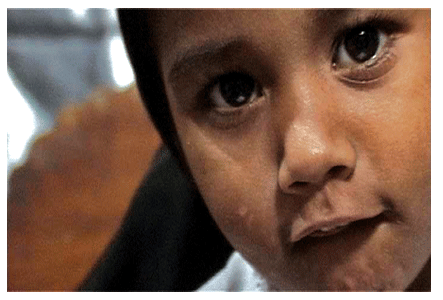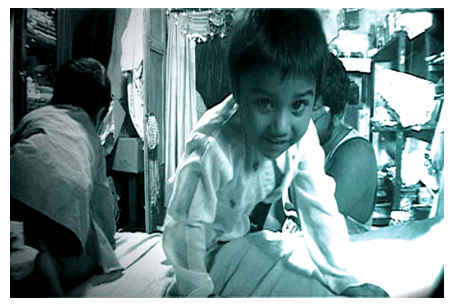- Publisher's Note
- Editorial
- Love of Life (that) Spills Over
- A Continuing Multiplication
- From Painting to Print
- Intimate Involvement
- Portrait of the Artist as an Old Man
- (Hi)Story of the Garhi Printmaking Studios, New Delhi
- Surinder Chadda
- Ramendranath Chakravorty
- Group 8
- Mother and Child: A Screenplay
- Straddling Worlds
- A Brief History of Printmaking at Santiniketan
- Vignettes from History
- Southern Strategies
- The Forgotten Pioneer: Rasiklal Parikh
- Printmaking in the City Of Joy
- Amitabha Banerjee: His Art and Aesthetic Journey
- Local Style and Homogenizing trends: Early Medieval Sculpture in Galaganatha
- English China: Delicate Pallid Beauty
- The Beauty of 'Bilal'
- Photo Essay
- The Way of The Masters: The Great Artists of India 1100 –1900
- Striving Towards Objectivity
- The Art of Sculpting In the Contemporary Times
- An Artistic Framework for an Alternative to Ecology
- Bidriware and Damascene Work in Jagdish and Kamla Mittal Museum of Indian Art
- A Lowdown on the Print Market
- The 'bubble' and the 'wobble'
- What Happened and What's Forthcoming
- Art Bengaluru
- Art Events Kolkata: June – July 2011
- Musings from Chennai
- Mumbai Art Sighting
- Previews
- In the News
- Christie's Jewellery Auction at London, South Kensington
ART news & views
The Beauty of 'Bilal'
Volume: 3 Issue No: 19 Month: 8 Year: 2011
Cinema
by Sarmistha Maiti
One of the most applauded Indian documentaries in the last few years; Bilal stands out as the most shining star in the darkness out of all. The film was on a 3 year old boy named Bilal growing up in the slums of Kolkata amidst a lot of dirt, gore and violence and that was the real beauty of this documentary version of the Slumdog. The contrast of ugliness everywhere and the purity of this child born out of blind parents, moves the film deep down your nerves and directly pierce into your heart. “Dig beneath the surface” as a review by Johnny Cooper says, and you will discover layers you had comfortably overlooked in the first viewing. The true speciality of Bilal lies not in him being extraordinary,  or in his ability to communicate with his blind parents, or the hard life he has to struggle in. In fact Bilal's speciality lies in his ordinariness, being just another kid and the beauty of it, that makes us identify and fall in love with the spirited child. Therein lays the universal appeal of the film.
or in his ability to communicate with his blind parents, or the hard life he has to struggle in. In fact Bilal's speciality lies in his ordinariness, being just another kid and the beauty of it, that makes us identify and fall in love with the spirited child. Therein lays the universal appeal of the film.
The story of Bilal seems to be like an unending journey where there is no specific narrative as such in its true real sense. At the same time it is not even visualized as snippets from life. Rather in a leisurely pace the events unfold and grow that brings out the extra-ordinary feel of this ordinary tale. Sourav Sarangi, the filmmaker takes an initial impersonal and observational mode of representation that juxtaposes with a very personal journey of the director during the entire process of the film making. The presence of the filmmaker does become as evident as he combines events of many days into that of one, or juxtapose separate reactions to certain actions to tell the tale he wants to. As Rajdeep Paul had written in Bilal: Making Light, “The deplorable living condition in which Bilal's family and many others live, the everyday excess of violence Bilal faces in form of beating from his parents, teachers or older neighbourhood kids seem more intense as similar situations over a longer period of time have been arranged one after another to create the illusion of a day, or the neighbourhood adolescent girls watching daily soap ardently has been changed by replacing the soap with one of the lewdest Bollywood numbers (Choli ke peechein) for the sake of meaning making".
That is perhaps the greatest success of a true documentary to take isolated realities from the world and by meaningful juxtaposition of them create a reality more profound. Bilal takes the audience into an internal journey through this clever construction of sequences  that the life of this little child and his family that slowly unfolds before our eyes. In return it also offers a sociological study into the lives and times of a community or a particular section of a society in today's India. The most striking part of the film is how close to the subjects we can actually go within the real film. The director lands the viewer right in the middle of the action, at very close quarters to the characters so that we can almost get hold of them. Hamza seems to be just an arm's reach away when he falls off the bed, every smack that Bilal gets from his parents and teachers seems to resound with such real appeal that it seems that we felt it ourselves, and when Bilal and his friends celebrate on his birthday, the joy directly translates across the screen. That is why Rajdeep Paul has justifiably commented that the whole world of Bilal comes alive in an amazing plethora of textures - from every wall in the house, to every oil rub and teeth brush, to every drop of rain and every bit of dump lying on the ground. Take for instance the older boy who stands up in protecting Bilal from the other kids in the street fights, or say the car that halts in the middle of the road to make way for the blind man. Sequences like these, that you almost miss in the first viewing of the film, according to me, are those that lift the film from being just a misery tale to that celebrating the human condition.
that the life of this little child and his family that slowly unfolds before our eyes. In return it also offers a sociological study into the lives and times of a community or a particular section of a society in today's India. The most striking part of the film is how close to the subjects we can actually go within the real film. The director lands the viewer right in the middle of the action, at very close quarters to the characters so that we can almost get hold of them. Hamza seems to be just an arm's reach away when he falls off the bed, every smack that Bilal gets from his parents and teachers seems to resound with such real appeal that it seems that we felt it ourselves, and when Bilal and his friends celebrate on his birthday, the joy directly translates across the screen. That is why Rajdeep Paul has justifiably commented that the whole world of Bilal comes alive in an amazing plethora of textures - from every wall in the house, to every oil rub and teeth brush, to every drop of rain and every bit of dump lying on the ground. Take for instance the older boy who stands up in protecting Bilal from the other kids in the street fights, or say the car that halts in the middle of the road to make way for the blind man. Sequences like these, that you almost miss in the first viewing of the film, according to me, are those that lift the film from being just a misery tale to that celebrating the human condition.
As stated earlier Bilal isn't just a film about the sufferings of the impoverished blind couple. It is more about a little boy in a big world, who goes about with his life on little wobbly feet, a woman who forms a beautiful friendship with the filmmaker and in hushed tones shares with him about the power struggle between her and her mother-in-law, and a familiar blind man from the streets who doesn't stop to give his little sons a hard beating but with amazing agility for a blind man catches his son by his ankle before he can fall off the bed. The film is characterized through these characters and their very mundane life, whom we might meet many a time on the street and never stop to look a second time. But the film shares that deep involvement through its intentionally “loose” narrative.